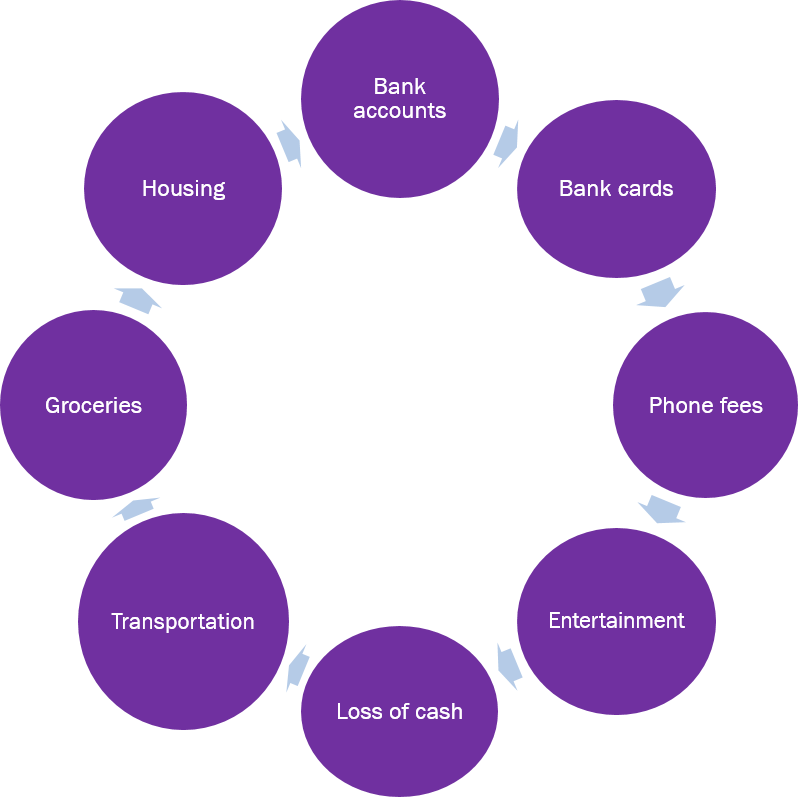
The Organization for Economic Co-operation and Development (OECD) has indicated that financial knowledge is a central life skill for participation in modern society. This supports the findings of Bryce Jorgensen and Jyoti Savla in Financial Literacy of Young Adults: The Importance of Parental Socialization, who identify financial skills as essential for daily individual and family life. They show that previous economic declines reveal abundant examples of how a lack of financial ability and understanding can influence family life. The quickly evolving global economy and its many different and complicated financial services mean that a strong financial education is as important as ever.
In their work for the OECD, Adele Atkinson and Flore-Anne Messy define financial literacy as “a combination of awareness, knowledge, skill, attitude, and behavior necessary to make sound financial decisions and ultimately achieve individual financial wellbeing.” The article Does Financial Education Matter? Education Literacy among Undergraduates in Malaysia by Siew-Yong Yew, Chen-Chen Yong, Kee-Cheok Cheong, and Nai-Peng Tey shows that financial literacy helps individuals make better financial decisions that increase personal wellbeing, helps governments protect consumers and investors, and leads to financial market stability and economic growth.
A 2011 survey by the British Columbia Securities Commission of over 3,000 high school graduates identified that 71 per cent of respondents wanted to have more time to learn about personal finance in high school. In addition, nearly 38 per cent answered that they did not know how much they earned and spent the previous month, while almost 58 per cent confirmed that they did not understand their bank account interest rate. In addition, 65 per cent answered that they did not shop around when searching for banking services. Regarding financial acumen, more than 93 per cent of respondents confirmed that learning more about finance at an early age was necessary for their future. This information suggests that ongoing financial education is essential for both high school and postsecondary students, especially in a rapidly changing world where economic futures are increasingly uncertain.
Some steps are being taken to support students in acquiring an education in financial literacy. Ontario’s new mandatory high school financial literacy program for Grade 10 students, implemented in September 2019, has the goal of helping individuals acquire the necessary skills and knowledge for financial management. Other provinces and territories in Canada have not implemented any mandatory financial literacy curriculum, although electives in this area may be available in some regions.
Of importance in this article, is that international students do not benefit from this curriculum if they have arrived in Canada for university – it is likely that many did not receive an education in financial literacy in their home countries. This becomes a great challenge, as they are engaging in a costly educational undertaking in an entirely unfamiliar culture and context and often do not have the types of support networks they depended on back home.
Challenges for international postsecondary students in Canada
International students are a vital part of Canada’s higher education system and economy. Universities increasingly rely on international student tuition fees to supplement their budget needs, as government grants to higher education stagnate and decline. The Government of Canada’s Economic impact of international education in Canada – 2017 update points out that international students spent approximately $15.5 billion in 2016 and contributed over $12.7 billion to the Canadian Gross Domestic Product (GDP). It also shows the growing influence the increasing number of international students has had on Canada’s GDP. According to Refugees and Citizenship Canada, as of August 2018, there were more than 649,000 valid study permits issued for international students studying in Canada and the full-time enrolment rate of these students rose 15 per cent between 2017 and 2018 nationally. Further, Canada’s Council of Ministers of Education forecasts that international student enrolment in Canadian postsecondary institutions will continue to increase over the next decade. These students are and will be an economic driver in both the near and the long-term future as well as an essential part of the Canadian labour market.
The scope of the study was to understand, in a broad sense, the financial burdens international students face and their expectations concerning financial literacy. Accordingly, we conducted some informal interviews with nine students from China, India, and Vietnam. The goal, ultimately, is to study this area in a rigorous manner. These conversations helped us to identify if this area of study matters, and what considerations might be most meaningful to study in more detail.
When parting from their families and home countries to pursue education, international students face many challenges, but one of their biggest obstacles is financial hardship. Conversations and interactions with international students coalesce around a few financial themes. When they arrive in Canada, particularly in the first few months, these students face numerous challenges. Issues such as choosing a bank account, which can be confusing for most individuals, is more complex for international students since the banking system they are familiar with may be quite different from Canada’s. Similarly, many students will not have purchased housing or used a bank card previously.
Financial challenges for international students.

Existing supports for international students
While the financial decisions students make in university can significantly impact their future plans and academic results, there is no official financial literacy program in Canada to support them in managing and overcoming these challenges. International Student Advisors (ISAs) may be part of the infrastructure at some universities; however ISAs are often not in a position to provide the foundational financial literacy that would be most helpful to international students.
In Credit Practices and Financial Education Needs of Midwest College Students, Angela Lyons found that one in three students described his/her financial situation was “likely” or “somewhat likely” to affect the student’s ability to finish their postsecondary degree. Poor financial management can affect a student’s academic performance, mental and physical wellbeing, and even the ability to find employment after graduation, as was documented by Örn Bodvarsson and Rosemary Walker in 2004. Due to their unfamiliarity with the new environment and financial limitations, international students require greater support than domestic students.
Another potential issue is the effect of currency fluctuations in their home country. Additional financial burdens in Canada may be complicated by inflation and changes in currency exchange rates.
In their study Financial literacy and stock market participation, Maarten Rooij, Annamaria Lusardi, and Rob Alessie determined that individuals with less financial literacy often seek financial advice from friends or family. However, international students are often separated from friends or families by a great distance, and the family may have little, if any, familiarity with Canadian financial institutions. In A Conceptual Model of Nontraditional Undergraduate Student Attrition, John Bean and Barbara Metzer point out that one reason students decide to drop out of university is the financial burden of attending.
Some possible solutions
Students genuinely care about finance and want to acquire greater financial literacy because they know this will lead to a better future. All of the students interviewed for this paper indicated that both international and domestic learners need fundamental financial literacy, as this knowledge is foundational for their futures. Postsecondary institutions should invest time and money in programs that help students gain an adequate understanding of financial issues. Regardless of colour, race, nationality, or educational backgrounds, it will help these individuals live less stressful and more productive lives. To better address the economic challenges all students face, the opportunity for a financial literacy education should be offered through university orientation programs.
Financial issues students wanted to know more about.

Students not only need knowledge of banking services and budgeting, but other aspects of finance such as taxes, tax refunds, financial legal terms, and the many potential scams that target international students and their savings. When students are in financial trouble, they expect universities to provide them with in-person support in a timely manner. In Canada and around the world, universities may want to consider this need and address it.
An orientation curriculum should be developed to provide a basic review of banking services, spending skills, and investment and saving strategies. The curriculum should suggest activities, including class discussion, group work, presentations (by peers, qualified academic advisors, and representatives from local financial institutions), and assessments that provide a multiplicity of essential experiences. The materials should range from basic information to intermediate levels of financial planning and be both accessible and inclusive so that students are motivated, curious, and engaged. Reflections on current research will ensure students approach these skills with the up-to-date knowledge and relevant examples. Finally, the curriculum should be provided during orientation week so that students can acquire this knowledge before being burdened with course work.
Through these activities, students may achieve expected outcomes, including cognitive objectives (learning facts, theories, formula, principles, etc.) and a greater understanding of their financial options. They could also make calculations related to financial goals, their spending, and, more importantly, their financial budget. These practical activities will provide a space to solve real-life economic challenges and engage with colleagues in conversation.
All of these collected experiences would benefit these students’ academic and future lives as citizens. They may plant some small seeds in students’ minds that they will be able to achieve their financial goals.
To properly leverage this curriculum, instructors should be allowed to effectively engage in their teaching and learning communities with comprehensive support from student advisor departments, financial support centres, as well as administrative leaders within the institution. This education should be considered an essential orientation at all universities as financial literacy is fundamental knowledge that all university students should gain.
Vuong Hoang Tran is an international student in the Master of Education program at Thompson Rivers University. He comes from Ho Chi Minh City, Vietnam. Victoria Handford is an Associate Professor and Coordinator of Graduate Programs in Education at Thompson Rivers University.










